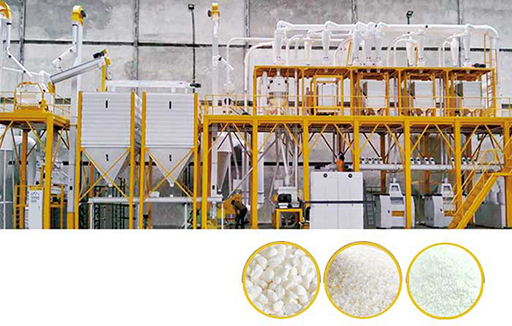How Much Do You Know About Maize Milling Plan?
Maize milling plant refers to the process of removing the outer layer of the corn kernel to reveal the edible part of the grain. This process not only makes the grain more palatable, but it also increases its nutritional value by removing the hull, which contains most of the corn's fiber and oils.

Workflows
A maize milling plant typically consists of several key components, including a cleaning section, a grinding section, a sifting section, and a packaging section. In the cleaning section, the maize kernels are separated from any debris, such as dirt, stems, and leaves. This is done using a combination of sieves and aspirators to ensure that only the purest kernels are used for milling.
Once the maize has been cleaned, it moves on to the grinding section. Here, the maize kernels are ground into a fine powder using a variety of different grinders, such as hammer mills, roller mills, and plate mills. The type of grinder used will depend on the desired end product, as well as the capacity of the mill. Some mills may be designed to produce fine maize flour, while others are designed to produce coarser meal or grits.
Next, the maize meal is sifted to remove any impurities and to produce a uniform particle size. This is done using sieves or other mechanical devices that are designed to separate the larger particles from the smaller ones. The sifted maize meal is then ready to be packaged and sold.
In the packaging section, the maize meal is packed into bags or other containers, depending on the type of mill and the desired end product. Some mills may be designed to produce maize flour for baking, while others may produce meal for animal feed. The packaging process must be carefully controlled to ensure that the maize meal is protected from contamination and spoilage.
Maize milling plants can vary greatly in size, from small, family-run operations to large, industrial-scale facilities. The size and complexity of a maize milling plant will depend on a variety of factors, including the amount of maize that is to be processed, the desired end product, and the budget of the operation.
Advantages
There are several advantages to using a maize milling machine. For example, maize meal is a staple food in many countries, and a maize milling plant can provide a reliable source of this important food source. Additionally, maize meal is a versatile ingredient that can be used in a variety of dishes, from baked goods to soups and stews.
Another advantage of maize milling is that it can increase the nutritional value of the grain. By removing the hull, the milling process reveals the inner part of the grain, which is rich in vitamins, minerals, and other essential nutrients. This makes maize meal a more nutritious food source than the raw maize kernels.
Maize milling plants are also beneficial for farmers, as they provide a way to turn their crops into a valuable food source. This can help to increase their income and improve their standard of living. In addition, maize milling plants can create jobs and stimulate economic growth in rural areas.
In conclusion, maize milling plants play a vital role in the food industry by providing a reliable source of maize meal, a versatile ingredient that is used in a variety of dishes. They also increase the nutritional value of maize and provide benefits for farmers, such as increased income and job creation. Whether you are a farmer, a food manufacturer, or a consumer, a maize milling plant can be a valuable investment in the future of food.
评论
发表评论